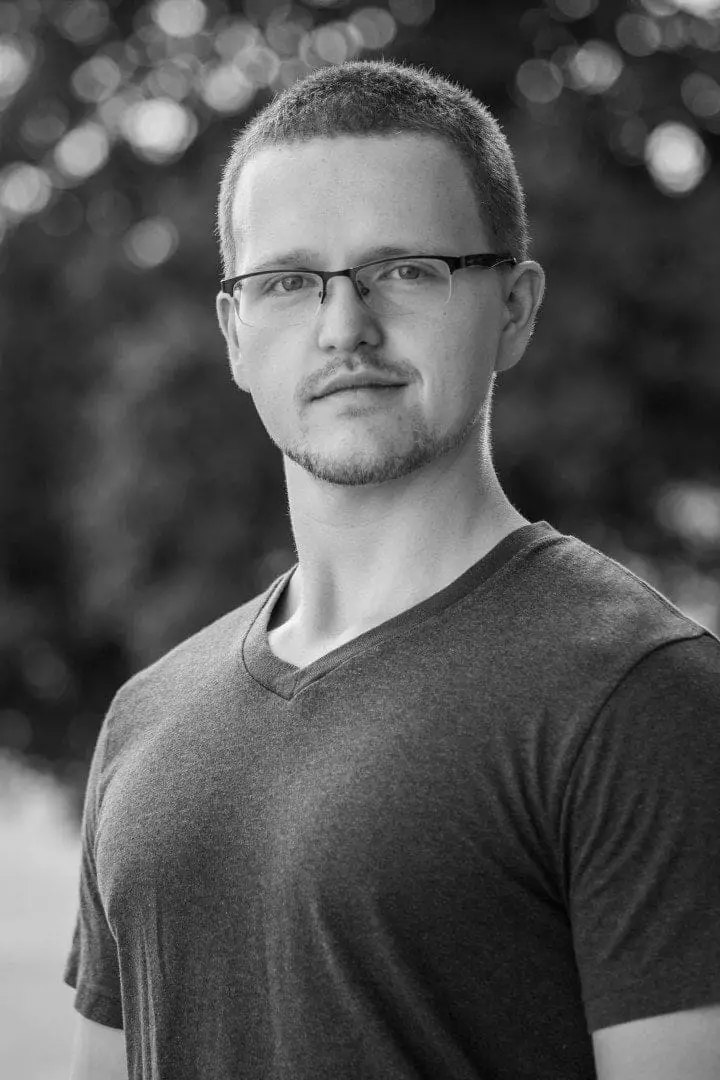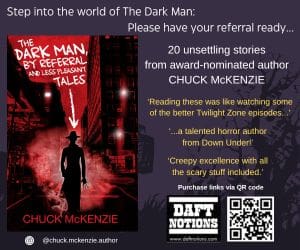WIHM: We Sat Down With Sarah Gribble And Here Is What She Had To Say!

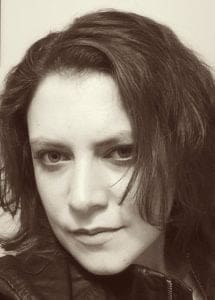 Selene — Welcome to The Horror Tree, and thanks for agreeing to an interview. First, tell us a bit about yourself.
Selene — Welcome to The Horror Tree, and thanks for agreeing to an interview. First, tell us a bit about yourself.
Sarah – Thanks for having me! I live in Columbus, Ohio, which just got named one of the dreariest cities in the world. (I’m hoping this works out well for my horror career.) I like pizza, pets, and Poe, not necessarily in that order. I have a Jason hockey mask in my office. Also a jar of tiny hands that I hope aren’t real.
Selene — How long have you been writing, and what about the horror genre draws you? And what scares you the most?
Sarah – I’ve been writing since I can remember. I just was always scribbling something, even if it came to nothing substantial. About seven or so years ago, I decided to take it seriously and started submitting short stories to every anthology and magazine I could find.
I stumbled around for a little bit trying to figure out what genre I would focus on. I was leaning toward satire at the time. But the more I wrote, the more horror stories started popping into my head. I’ve always loved horror, so it’s a natural fit, and I’m not sure why I didn’t start there to begin with. Horror is just great fun, I think. You get to explore your deepest fears without actually experiencing them. There’s also a ton of horror that serves as a commentary on societal problems, but it’s wrapped in a nice little package of goosebumps. It’s just fun.
My biggest fear is floating off into space (“space floating”). Those scenes in movies where an astronaut is space walking and their tether breaks? Yuck! I about have a panic attack over that. I know there’s a miniscule chance I’ll ever have to deal with space floating, but I did tell my husband if we ever have to evacuate the planet as a species, I’m staying here and going down with the ship.
Selene — Your site describes you as a writer of “horror and dark fantasy.” While I’m sure there is a crossover, what’s the difference between the two genres?
Sarah – Horror and dark fantasy are very similar, but horror’s purpose is to scare, whereas dark fantasy doesn’t have to. Horror can have supernatural elements, but doesn’t have to (like King’s Misery). Dark fantasy exists in a fantastical world that has a dark, brooding atmosphere. I always make sure to tell people I write both because a lot of people are turned off by horror but don’t mind a little bit of dark in their story.
Selene — February is Women in Horror Month (WiHM). Do you have anything planned?
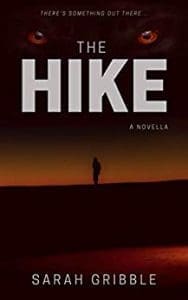 Sarah – Yes! Not a ton because I’m neck-deep in editing, but my novella, The Hike, is currently on sale for .99! I’ll also be doing a couple book giveaways for my newsletter subscribers (sarah-gribble.com) and possibly something on Instagram.
Sarah – Yes! Not a ton because I’m neck-deep in editing, but my novella, The Hike, is currently on sale for .99! I’ll also be doing a couple book giveaways for my newsletter subscribers (sarah-gribble.com) and possibly something on Instagram.
Selene — Looking over your website, and your Amazon author page, it looks like you mostly work in the shorter form, except for your new novella The Hike. What do you like about writing short stories?
Sarah – If I’m honest, the primary reason I love short stories is you can finish them in a day! That satisfactory feeling of accomplishing something doesn’t take months to happen with short form. Of course, they also force you to really cut the story down to the bone as well, which is always fun. I enjoy seeing how much backstory and world-building I can fit into such a small space. Sometimes just a sentence can paint an entire picture in your readers’ minds.
Selene – Have you considered writing a full-length novel? Working in the short form means you leave out so many of the details and character development you can play with in a novel.
Sarah – I’ve actually written three novels! The first one was terrible and is hiding in my basement. The second is a dark fantasy novel called Surviving Death. It’s set in the afterlife (think The Divine Comedy, but darker and with a touch of rebellion) and will be published later this year. And my third is still a first draft. It’s a horror novel set on an island in Lake Erie.
Novels are a lot tougher for me after working with short stories for so long. I still find that I tend to “write short” on my first draft and have to fluff out a lot of the characters and world-building on my second pass. I’m like the opposite of Stephen King, who insists you should cut something like ten percent from your first draft. For me it’s more like add ten!
Selene — I have to ask the requisite question, since your story subjects and characters vary so much–Where do you get your ideas?
Sarah – Everything is a story if you pay attention. And anything can be creepy. I once wrote a horror story about mud. I’ve written one about an adult coloring book. Just last night my husband was talking about this awful candy concoction his co-worker brought to work and I started wondering if Halloween candy could possess or control children in some way. I’m not saying every idea is a good one (that Halloween candy thing probably isn’t going anywhere), but once you’ve written a few stories, and if you write pretty consistently, you’ll start to see ideas everywhere. I’m never out of ideas. If anything, I have way too many to write. I’ll die with stories still inside my head.
Selene – What do you like most and least about writing?
Sarah – I least like editing books. Shorts aren’t so bad, but books are massive things that make your mind whirl around until you want to give up and cry. (But don’t give up!) I prefer writing first drafts where I can just let go and write as fast as possible and not worry about whether there’s a plot hole or if I changed a character’s description halfway through. But my absolute favorite thing is getting published. There’s a sort of high that comes with that that makes all the work so totally worth it.
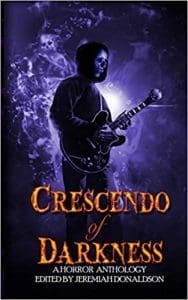 Selene — What inspires your characters? I really enjoyed the story “Crimson Ivory” from Crescendo of Darkness–I spent fifteen years volunteering for college radio, and I KNOW many people like those music geeks!
Selene — What inspires your characters? I really enjoyed the story “Crimson Ivory” from Crescendo of Darkness–I spent fifteen years volunteering for college radio, and I KNOW many people like those music geeks!
Sarah – Thanks! I had a lot of fun writing that one. There was a themed call for that anthology and I just thought it would be fun. I don’t know much about music—I love it, but was never in the school band and my singing sounds like a cat dying. I wanted to learn something about music so I did some research and out popped “Crimson Ivory”.
In general, though, my characters just sort of come to me. I don’t do a lot of character planning before I start writing. Some people do all sorts of questionnaires and such and that’s just not for me. (Though I do normally find a picture to print of what they look like.) I find my characters develop on their own as I write. I do like to include little tidbits about real-life people in my stories, though. It makes for a more rounded, less cliché character.
Selene — Fun question: If you could cast anyone in the movie version of one of your stories, which story and who would it be?
Sarah – This is a wonderful question because when I write a book, I “cast” characters and print out pictures of actors! Short stories I spend less time with, so I don’t think I’ve ever done that for them. How fun to think about!
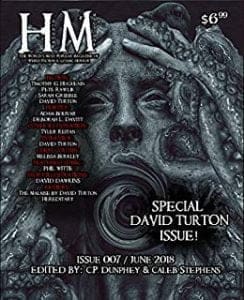 Let’s go with a story I wrote called “Thirst” that was published in Hinnom Magazine. The story’s about a waterborne parasite that was trapped in a Greenland glacier. I think Anya Taylor-Joy (she was in Split and The Witch) would be great to play my main character, Maya. She’s just great in general.
Let’s go with a story I wrote called “Thirst” that was published in Hinnom Magazine. The story’s about a waterborne parasite that was trapped in a Greenland glacier. I think Anya Taylor-Joy (she was in Split and The Witch) would be great to play my main character, Maya. She’s just great in general.
In case anyone’s curious, I had Surviving Death fully cast with the likes of Emma Stone, Naveen Andrews, and Danny DeVito. Dreaming big!
Selene — I noticed that in The Hike, the desert setting is as much one of the characters as the two couples involved in the action. What makes you decide on the settings of your stories?
Sarah – I normally choose settings because I’ve been there, or somewhere similar, and something about the place was either fascinating or at least somewhat creepy. The Hike was based on a hike I actually went on a couple years ago. I obviously embellished the terror and added a supernatural element, but a lot of what those four friends encounter, my husband and I really encountered. The bees, the stalking coyote, the tarantulas, the air quality causing sound to basically not move more than two inches from your lips…all that was true. We spent something like six hours in that wash and it was awful. Made for a good story, though!
Setting is often just as important (if not more so) than character development when it comes to horror. You need to know your setting like you do your friends. Feel it. Live it if you can. And if you can’t, spend plenty of time researching or imagining what it looks like.
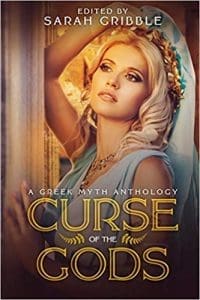 Selene — About a year ago, you edited your first anthology, Curse of the Gods. Tell us about that.
Selene — About a year ago, you edited your first anthology, Curse of the Gods. Tell us about that.
Sarah – I had respect for editors before I editing that anthology, but I came out worshipping them! I’d considered running my own female-centric anthology and when the opportunity came to edit Curse of the Gods, I jumped at it. I wanted to see how much work was really involved before deciding to do my own. And wow! It’s a lot of work! I love Greek myths, though, so I did enjoy the stories. Most of them that made it into the book were centered around female-empowerment. Any of the old myths that pictured women as damsels in distress were turned on their heads and the women were kicking ass. It’s a pretty great read because of it.
Selene — Curse of the Gods is a re-imagining of Greek myths. What’s your favourite Greek myth? (I’d say mine is Selene but she’s only got one and it’s…questionable!).
Sarah – All the Greek myths are a little questionable! My favorite was always Arachne. For those that don’t know it, I’ll give the short version: Arachne is really good at weaving and brags about it, which upsets Athena. Athena comes down and challenges her to a weave-off, which Arachne wins. Arachne ends up hanging herself. I’ve seen two versions of the ending: In one, Athena takes pity on the girl and turns her into a spider; in the other, Athena turns her into a spider to punish her. I tend to prefer the former version, as Athena is my favorite goddess. The story is just a great origin story for spiders and it’s always interesting to see mortals stand up to the tyranny of the gods.
Selene – What advice would you give a new writer?
Sarah – Read. It seems kind of obvious that you’d need to read a lot in order to write well, but in my work at The Write Practice, we see a lot of people who want to be writers but claim they only read a couple books a year. Reading is studying. You will not learn the craft of writing if you don’t study the books and writers that have already made it to publication. Read and pay attention. Note story structure, how character development and world-building are weaved in, and even punctuation. Pay attention to everything. Read everything.
Selene – Thank you again for answering my questions today. Do you have anything else you’d like to talk about here?
Sarah – I just want to say that I love that you guys do these interviews for Women in Horror Month. While I don’t believe I’ve ever been discriminated against when I’ve submitted to editors because of my sex, I can say that it is a little lonely when you’re the only female in an anthology. (That’s happened to me more times than I can count.) It’s also not fun to get looks of disgust or wonderment from people when I tell them I write horror.
This entire month is a great way to promote those women out there who love horror, to show them they can write it if they want, and to squash the ridiculous assumption that horror is a “man’s” genre.
Thanks again for doing this and thanks for having me!
- About the Author
- Latest Posts
Selene MacLeod is a night operator and sometime writing hobbyist. She holds a BA in Communications from Wilfrid Laurier University and resides in Kitchener, Ontario. Her work has appeared in several horror and crime fiction anthologies, most recently Shotgun Honey, Drag Noir (Fox Spirit Books); and the upcoming Freakshow: Freakishly Fascinating Tales of Mystery and Suspense (Copper Pen Press), and Tragedy Queens (Clash Media).She’s most excited about editing a charity anthology for Nocturnicorn Books called Anthem: A Tribute to Leonard Cohen, due out late 2017.

